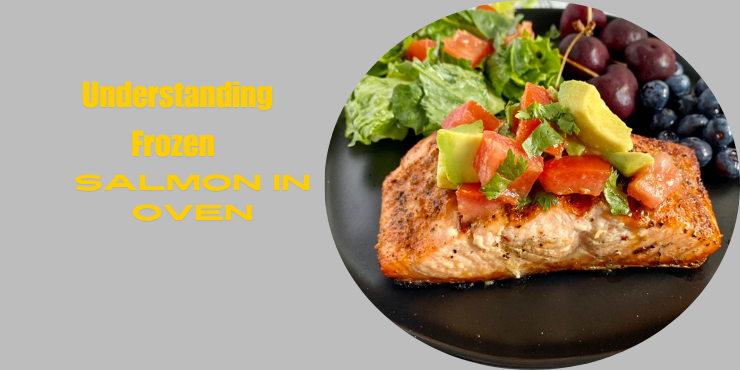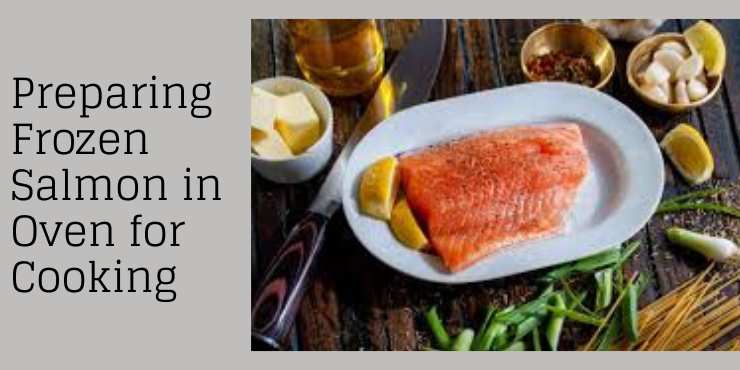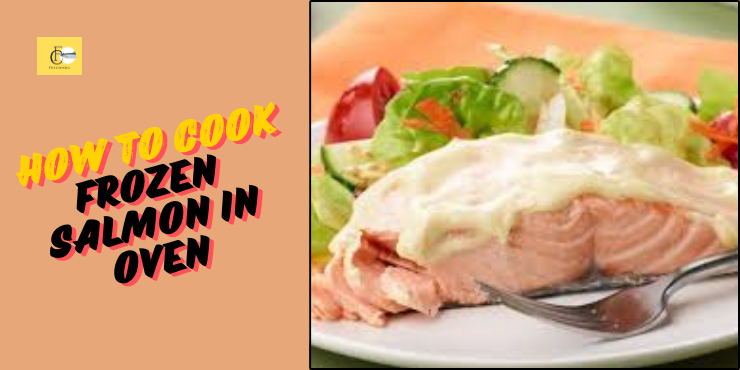Introduction
Salmon is a powerhouse of nutrition, offering numerous health benefits, from rich omega-3 fatty acids to high-quality protein. If you’ve ever wondered about the best way to prepare this delicious fish, you’re in the right place. Cooking salmon from frozen might seem like a challenge, but it’s incredibly convenient and straightforward. This guide will walk you through everything you need to know to cook frozen salmon in the oven, ensuring a tasty and nutritious meal every time.
Why Choose Frozen Salmon in Oven?
Convenience and Availability
Frozen salmon is a fantastic option for those who want to enjoy the benefits of this nutritious fish without the hassle of frequent grocery trips. Available year-round, it’s easy to stock up and have on hand for quick meals.
Nutritional Benefits
Freezing preserves the salmon’s nutritional value, keeping it as healthy as fresh salmon. It retains all the beneficial omega-3 fatty acids, vitamins, and minerals essential for a balanced diet.
Cost-Effectiveness
Often, frozen salmon is more affordable than fresh, making it a great choice for budget-conscious consumers. Plus, it reduces food waste since you can use only what you need and keep the rest frozen.
Understanding Frozen Salmon in Oven

Types of Salmon Available
There are several types of salmon you can buy frozen, including Atlantic, Sockeye, and Coho. Each has its unique flavor profile and texture, allowing for variety in your meals.
How Salmon is Frozen
Salmon is typically flash-frozen shortly after being caught, which locks in its freshness and nutritional value. This process involves freezing the fish at very low temperatures very quickly.
Quality Considerations
When buying frozen salmon, look for vacuum-sealed packages with minimal ice crystals, which can indicate freezer burn. Also, check for a firm texture and bright color.
Preparing Frozen Salmon in the Oven for Cooking

Thawing vs. Cooking Directly from Frozen
While you can thaw salmon before cooking, it’s perfectly fine to cook it directly from frozen. This method saves time and maintains the fish’s moist texture.
Tools and Ingredients Needed
You’ll need a baking sheet, aluminum foil or parchment paper, a sharp knife, and your choice of seasonings. Essential ingredients include olive oil, salt, pepper, and lemon.
Safety Precautions
Always handle frozen salmon with clean hands and utensils to prevent contamination. Ensure it’s cooked to the appropriate internal temperature to kill any potential bacteria.
Step-by-Step Guide to Cooking Frozen Salmon in Oven
Preheating the Oven
Optimal Temperature
Preheat your oven to 425°F (220°C). This high temperature helps cook the salmon quickly and evenly.
Importance of Preheating
A preheated oven ensures that the salmon cooks thoroughly, preserving its texture and flavor.
Seasoning the Salmon
Basic Seasoning Ideas
A simple seasoning of olive oil, salt, and pepper works wonders. Brush the frozen fillets with olive oil, then sprinkle salt and pepper generously.
Advanced Marinades and Rubs
For more flavor, consider using marinades with garlic, soy sauce, honey, or mustard. Dry rubs with paprika, cumin, and brown sugar can also add a delicious kick.
Baking the Salmon

Using Foil or Parchment Paper
Place the salmon on a baking sheet lined with foil or parchment paper. This not only makes cleanup easier but also prevents the fish from sticking.
Baking Time and Temperature
Bake the salmon for 20-25 minutes. Because it’s frozen, it takes a bit longer than fresh salmon. Aim for an internal temperature of 145°F (63°C).
Checking for Doneness
The salmon should be opaque and flaky when done. Use a fork to check if it easily flakes apart.
Enhancing Flavor
Adding Herbs and Citrus
Sprinkle fresh herbs like dill or parsley and add lemon slices on top before baking to infuse the salmon with extra flavor.
Using Sauces and Glazes
Consider finishing your salmon with a glaze made from honey and soy sauce or a creamy dill sauce for an extra layer of taste.
Alternative Methods for Cooking Frozen Salmon
Broiling
Broiling gives a crispy top to the salmon. Place the fillets on a broiler pan and broil for about 6-8 minutes per side.
Grilling
Grilling frozen salmon is another great option. Preheat the grill to medium-high, and grill the fillets for 5-7 minutes per side.
Poaching
Poaching is a gentle method that keeps the salmon moist. Simmer the frozen fillets in a mixture of water, white wine, and herbs for about 15-20 minutes.
Serving Suggestions
Pairing with Vegetables
Serve your salmon with roasted or steamed vegetables like asparagus, broccoli, or carrots. These not only add color but also complement the fish’s flavor.
Complementary Side Dishes
Consider sides like quinoa, wild rice, or a light salad. These options add texture and balance to your meal.
Presentation Tips
Garnish with fresh herbs and lemon wedges. Presenting the salmon on a bed of greens can make the dish look as good as it tastes.
Common Mistakes to Avoid
Overcooking
Overcooking can make salmon dry and tough. Always keep an eye on the cooking time and check for doneness early.
Undercooking
Ensure the salmon reaches an internal temperature of 145°F (63°C). Undercooked fish can be unsafe to eat.
Not Using Enough Seasoning
Salmon has a robust flavor that pairs well with bold seasonings. Don’t be shy with your spices and herbs.
Health Benefits of Eating Salmon
Rich in Omega-3 Fatty Acids
Omega-3s are crucial for heart health, reducing inflammation, and supporting brain function.
High-Quality Protein
Salmon is an excellent source of protein, essential for muscle repair and growth.
Vitamins and Minerals
Packed with vitamins B12, D, and selenium, salmon supports overall health and well-being.
Conclusion
Cooking frozen salmon in the oven is a simple, convenient, and nutritious way to enjoy this delicious fish. By following the steps outlined, you can create a variety of flavorful and healthy meals. Don’t hesitate to experiment with different seasonings and sides to keep your salmon dishes exciting and enjoyable.
FAQs
Can you cook salmon without thawing it first?
Yes, you can cook salmon directly from frozen. It’s a time-saving method that maintains the fish’s moisture and texture.
How do you know when salmon is fully cooked?
Salmon is made when it reaches an internal temperature of 145°F (63°C) and flakes easily with a fork.
What are the best seasonings for salmon?
Simple seasonings like olive oil, salt, and pepper are great. For more flavor, try marinades with garlic, soy sauce, honey, or dry rubs with paprika and cumin.
How can you store leftover cooked salmon?
Store leftover salmon in an airtight container in the refrigerator for up to 3 days. It can also be frozen for longer storage.
Is frozen salmon as healthy as fresh salmon?
Yes, frozen salmon retains its nutritional value and can be just as healthy as fresh salmon.

